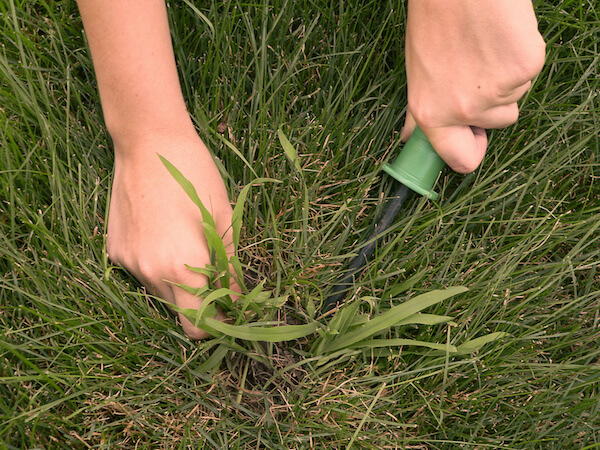
Managing Crabgrass on Your Florida-Friendly Lawn
If you have lived in Florida or even just visited, you can understand the kind of toll the heat, humidity, and oftentimes constant sunlight can take on all forms of life. We are not called the “sunshine state” for no reason, after all! In order to keep your Florida lawn in tip-top shape, you should be able to identify and understand the different threats your lawn may face, and how to counteract them. One of those is crabgrass.
Generally speaking, crabgrass is a creeping grass that can potentially become a serious problem if untreated. It is native to tropical and warm temperate regions, which makes it a major threat to Florida lawns.
There are five crabgrass species that are common in Florida: India, blanket, southern, tropical, and smooth varieties. While most are summer annuals, meaning that they are most prominent for that season, there are some that live longer than just one growing season.
India Crabgrass
India crabgrass is a summer annual form of crabgrass, and forms what looks like a “mat” on your lawn. The blades on the leaves are very short (~ 1 inch long). What differentiates this type of crabgrass from others is that the sheathes as well as the blades are smooth.
Blanket Crabgrass
Blanket crabgrass differs from India crabgrass in that it favors the humid environments we are used to in Florida. It is a summer annual perennial and has “creeping stolons,” which are horizontal plant stems or runners. They take root at points along the stem to form new plants, so appearance-wise, they are very different from India crabgrass. The leaves are short, though, and quite hairy.
Southern Crabgrass
Southern crabgrass is so similar to “large” crabgrass, that it can be difficult to tell the difference between the two. This is a summer annual like the others mentioned above, and have branched stems. They grow in both dry and humid areas and one of the species of crabgrass with large leaves longer than two inches, with hair as well. Southern crabgrass looks similar to tropical crabgrass, which may make it a little more difficult to identify. However, they differ in that the branches of large southern crabgrass spots arise from different points along the stalks.
Tropical Crabgrass
Tropical crabgrass, similarly to southern crabgrass, has leaves that are not just hairy, but are also typically over two inches long. While its southern counterpart has braches growing from different points along each stalk, the branches on tropical crabgrass meet at the same point on the stem.
Smooth Crabgrass
Smooth crabgrass is considered a spreading type of plant, with roots in low spots along the stems. With large leaves, this variety of crabgrass is smooth on both surfaces, which really distinguishes it from other species you may see on your lawn. Smooth crabgrass has anywhere between two and six spiked branches, and can be described as “finger-like.” You are more likely to find this species if you live in north Florida and the panhandle.
What do I need to know about crabgrass?
So now that you are familiar with the different kinds of Florida crabgrass, what can you do to prevent it? The truth is that there are many ways to manage your Florida-friendly lawn. Here are some of the basics when it comes to crabgrass maintenance:
- It typically germinates in early spring, or when soil temperatures are at or above 50 degrees Fahrenheit.
- It prefers areas where turf grass is weak, so remember that healthy turf is safe turf!
- Follow general weed management practices, such as:
- Mowing at recommended heights
- Removing clippings when you see weeds emerging
- Applying fertilizer at the best time for your type of turf grass
- Using soil testing to determine nutrient needs
- Applying herbicides before the crabgrass has an opportunity to germinate.
There are plenty of ways to ensure that your turf grass is looking and feeling its best; what we’ve provided is just the tip of the iceberg. It may seem overwhelming at first, but once you are able to identify the different species of crabgrass that could affect your lawn, you’ll be able to properly manage it.